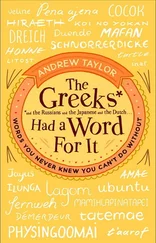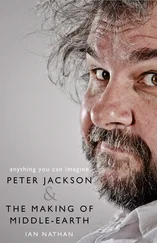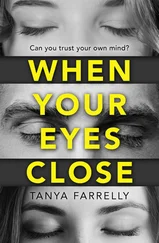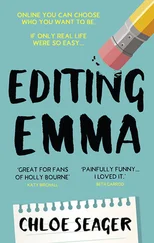‘It’s such an immersive thing, because as much as he delved into and loved those languages, he loved them because of their connection with who the British are as a people. And that profoundly affected him, and that probably has a lot to do with his childhood.’
Watching the encroachment of industry and the concomitant loss of a tradition; the stark impressions of the battlefront that stripped bare notions of class; the devotion to nature (especially trees); learning; fine company; a dignified, if antiquated properness in his relationship with women: all were ingredients in the wholeness of the book. But deeper still, in Tolkien’s early loss of his parents, Boyens sees the loneliness of Frodo expelled from the childlike idyll of the Shire to venture into the adulthood of Middle-earth.
Composed first for his children, Tolkien would publish The Hobbit in 1937, a lighter, charming prelude to The Lord of the Rings , which would eventually follow in 1954. He never intended his second novel to be divided into three books, or considered a trilogy. This was a necessity brought on by soaring paper costs following the Second World War (another global conflict that overshadowed his writing). It was a single, epic story, over 1,000 pages in length, made up of more than half a million words.
His response to Ackerman and co. provides an insight into how the author generally perceived the idea of transforming his work into film entertainment.
Tolkien had visual sense. In among the treatment’s atrocities, he could appreciate, ‘A scene of gloom lit by a small red fire with the wraiths approaching as darker shadows.’
He revealed actorly qualities too. In the 1950s, disappointed by that 1955 BBC version, he recorded his own radio play The Homecoming of Beorhtnoth, Beorhthelm’s Son , in the poem’s full alliterative Anglo-Saxon metre. There is a little existing footage of him from a BBC documentary from 1968. He plays well to the camera: warm, curious and knowingly dotty, throwing in an occasional faraway look in his eye as he gazes off into the distance, perhaps to Middle-earth.
Even so, Tolkien didn’t regard movies, or drama in general, as legitimate art. We are left to wonder if Sir Ian McKellen’s wry Gandalf or Viggo Mortensen’s robust Aragorn might have swayed him, but he considered the idea of acting to be a ‘bogus magic’. It was pretending.
Nevertheless, as early as 1957 he had written to his publisher Stanley Unwin that he wasn’t opposed to the idea of an animated version of the book — evidently having no faith that live action would stand up to the exotic creatures and fantastical locations therein. In another oft-quoted letter to his publisher, in his qualified way he even welcomed the idea.
‘And that quite apart from the glint of money,’ he added, ‘though on the brink of retirement that is not an unpleasant possibility.’
He was no fool about the business.
Tolkien reasoned, with a foresight that would have made him more adept at dealing with Hollywood than his quiet, donnish persona would suggest, that he could either strike a deal through which he would lose control but be correspondingly compensated financially, or retain a degree of control but not the fiscal win.
‘Cash or kudos,’ he explained to his biographer Humphrey Carpenter.
With few signs of either cash or kudos emerging out of granting a six-month option to Ackerman and his associates, as the biography succinctly puts it, ‘negotiations were not continued’.
*
From that enshrined afternoon when, bored by marking uninspired English papers in his Northmoor Road drawing room, Tolkien had turned over a sheet and quite from nowhere written the line ‘In a hole in the ground there lived a hobbit’ a river of events will flow and churn over the years toward a quiet backwater in New Zealand. Those of a mystical bent might call it fate.
But there was a long way to go yet.
Nigh on a decade had passed when, in 1967, Tolkien was approached for a second time about the film rights, this time for both The Hobbit and The Lord of the Rings .
While he welcomed the financial security the popularity of the novel had granted him, Tolkien had grown guarded if not threatened by the side effects of his success. He had no interest in fame and its attendant adulation. Especially wearisome were those fans who arrived on his doorstep uninvited with all their infernal questions, which he patiently endeavoured to answer. He took to setting an alarm clock in another room. When it rang, he politely claimed this signalled another appointment. Unwisely still to be found in the Oxford telephone directory, he would get calls deep into the night from faraway readers with a poor grasp of time-zone differences.
When United Artists came to him with this new offer, he may have seen it as a chance to deflect attention. Now seventy-five, and lacking the energy to deal with another adaptation he was always going to find fault with, he most likely wanted to wash his hands of the whole business. He could use the money to establish a trust fund for his grandchildren’s education. So he agreed to part with the filmmaking rights in perpetuity to both books for what now looks like a parsimonious £104,000.
It was a remarkably generous contract. To paraphrase the pertinent details: ‘Filmmakers had the right to add to or subtract from the work or any part thereof. They had the right to make sequels to, new versions, and adaptations of the work or any part thereof. To use any part or parts of the work or the theme thereof, or any instance, character, characteristics, scenes, sequences or characters therein …’
In other words, the studio was legally entitled to do just about anything it wanted with the books. It remains entirely permissible for the current rights holder to devise a sequel to Frodo’s journey.
Six years later, in 1973, Tolkien would pass away without having seen a single frame of his work on screen.
UA, as it was known, certainly in Hollywood, seemed a suitable berth for Tolkien’s books. Proudly founded in 1919 by the collective of actors Charlie Chaplin, Mary Pickford, Douglas Fairbanks and, granddaddy of the movie epic, director D.W. Griffith, it was an attempt by the artists to control the means of production. To resolve, they hoped, the eternal ‘art versus business’ conflict that had dogged, and goes on dogging, the film business from its very inception. A similar philosophy would later underpin Jackson’s filmmaking collective.
UA stutteringly lived up to its billing. While the great dream of artists at the wheel would falter — they were too busy acting and directing to find time to steer a film company — and the company would gradually be run along more traditional Hollywood models, it nevertheless endeavoured to maintain a veneer of artistic intent.
Among its library of adaptations are definitive versions of Wuthering Heights , Of Mice and Men , Around the World in 80 Days , West Side Story , the James Bond movies (cherished by Jackson), Midnight Cowboy , Fiddler on the Roof and One Flew Over The Cuckoo’s Nest . The latter produced by Saul Zaentz, who will prove significant.
Former head of production at UA, Steven Bach, who tells his fateful tale of Hollywood hubris and artistic ambition run amok during the making of Heaven’s Gate in the book Final Cut , reports that from the time they made the deal with Tolkien those rights languished for a further decade. They just couldn’t find a way, or at least a way they considered commercially viable.
Eminent playwright Peter Shaffer (who wrote the stage play of Amadeus ) had written what Bach considered an elegant script for a single film version, but it never gained momentum.
Читать дальше












